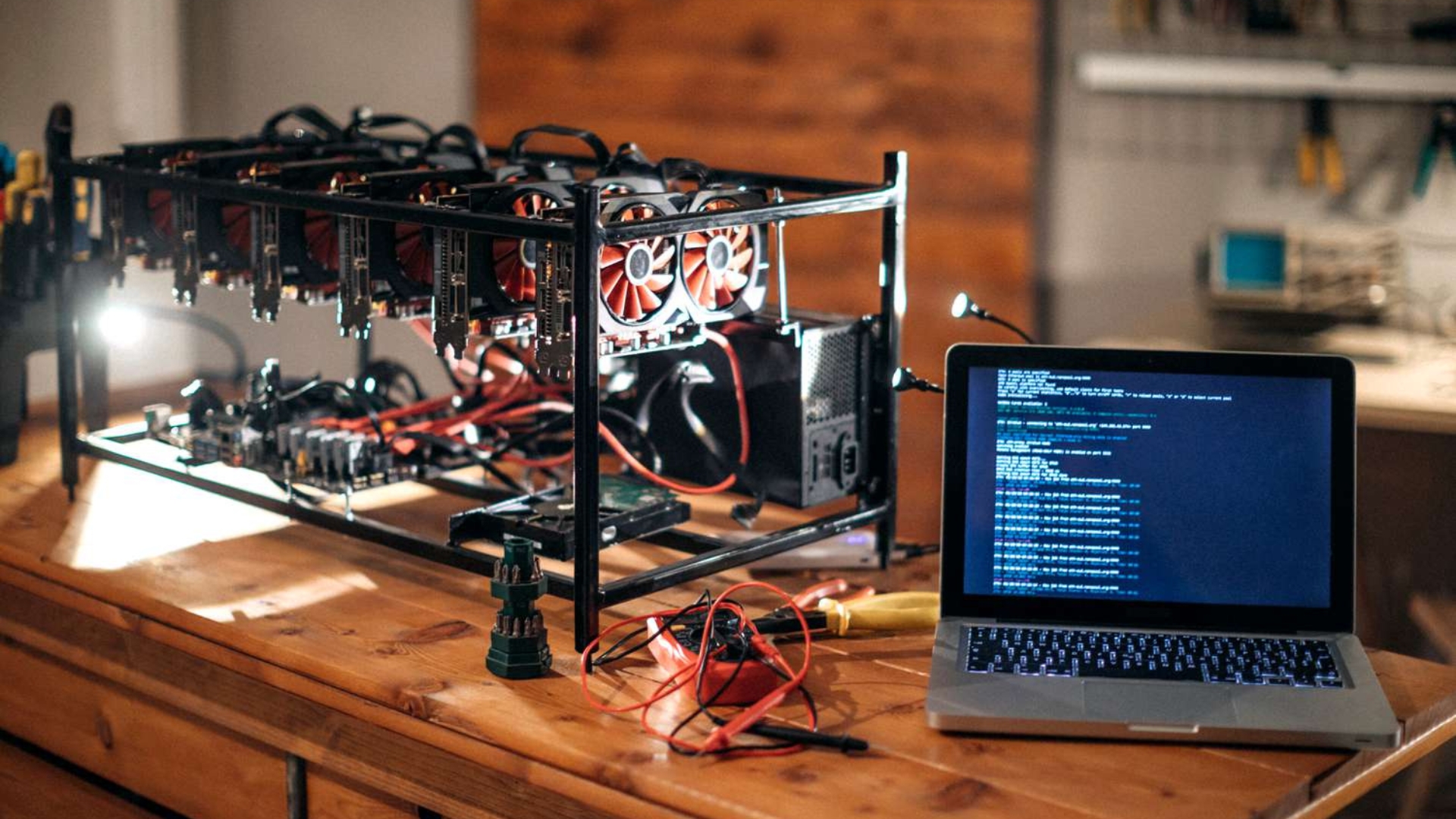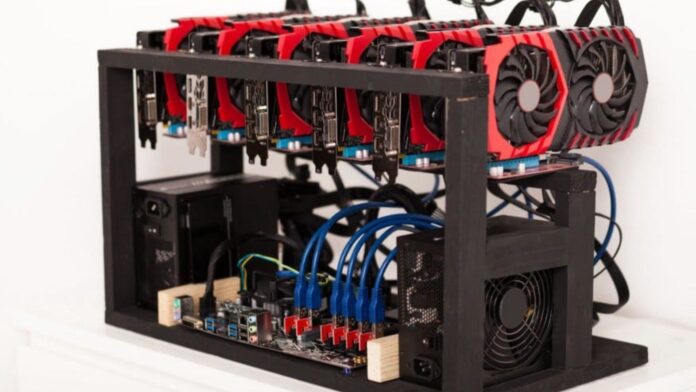Build a Cryptocurrency Mining Ring in 2024. Mining cryptocurrency involves authenticating blockchain transactions with a computer or computers. These devices contribute to a digital ledger and solve cryptographic equations. For faster blockchain transaction validation, more computers must solve equations. Every unconfirmed block hash miner earns them money. Mining is computationally and energy-intensive and requires specialized technology and software.
The most mined and profitable cryptocurrencies are Bitcoin (BTC) $42,890, Monero (XMR) $168, Ravencoin (RVN) $0.01, and Dogecoin (DOGE) $0.08. Since Ethereum uses proof-of-stake (PoS), mining $2,296 ETH is no longer possible. Anyone investing in cryptocurrencies should understand mining. Miners are crucial to blockchain security and decentralization. A mining pool, specialized hardware, and software are needed to mine cryptocurrency. Since the process may be challenging to understand and set up without proper instruction, below are the most crucial details.
Cryptocurrency Mining Rig—How Does it Work?

All the usual suspects in a personal computer—a central processing unit (CPU), motherboard, random access memory (RAM), and storage—are there in a mining “rig” as well. In contrast to traditional computer systems, mining rigs use GPUs or graphics processing units. GPUs better solve the cryptographic equations required to validate blockchain transactions. Regarding instructions per clock, a single high-end GPU can surpass a conventional CPU performance by up to 800. So, if you want to mine cryptocurrency, you must have them.
In addition to being easier to maintain and having significantly greater hash rates, GPUs are a popular choice among miners. The hash rate determines mining profitability, which measures a computer’s capacity to solve cryptographic equations quickly. Another important distinction is the use of several GPUs in mining setups. This is essential because a rig’s hash rate is directly proportional to its number of GPUs. Mining rigs for cryptocurrencies validate blockchain transactions using graphics processing units.
Keep in mind that GPUs aren’t necessary for every miner. Utilizing an application-specific integrated circuit (ASIC) may be preferred by miners in certain instances, including Bitcoin mining.
Some things to consider when looking to build a mining rig are:
- The cost of equipment: As a whole, the costs of the required hardware should be considered, especially as GPUs and ASICs can be pretty costly.
- The cost of electricity: Because cryptocurrency mining uses a lot of power, that expense must be factored in.
- Trial and error: Unlike constructing a unique personal computer, developing a mining setup may take a lot of trying and changing.
Components Required to Build a Mining Rig
Several key components are required to build a mining rig. These include:
GPUs
Graphics processing units (GPUs) are the backbone of every mining equipment. The number of GPUs required is directly proportional to the desired hash rate. However, a beginner should be OK with just one or two GPUs.
ASICs
Cryptocurrency mining requires specialized hardware, and ASICs provide just that. Although their hash rates are far higher, they are typically more expensive than GPUs.
Motherboard
A motherboard is a computer’s central processing unit (CPU), and a mining rig is no exception. For the rig to function correctly, it must be compatible with all the GPUs.
CPU
Although it is also possible, some newcomers only use CPUs for mining. Cryptocurrency Mining Ring: They should be top-tier and equipped to handle mining workloads. A low-end or middling CPU, like Intel 8th or 9th generation, is required for a basic rig to use GPUs for mining.
RAM
Computers cannot function without random access memory (RAM), which temporarily stores data while the machine operates. A mining rig must have sufficient RAM to store the data of all the GPUs utilized in the device.
Power Supply Unit
The PSU, or power supply unit, is crucial to any mining system. The power supply unit (PSU) must supply sufficient electricity to all the rig’s parts. Primarily, your power supply unit (PSU) should be able to provide twice as much power as your equipment uses. A 1200w platinum-rated power supply unit is usually sufficient.
Storage
Mining equipment requires storage space much like any other computer. It could be a traditional hard drive or a solid-state drive. How much data you intend to mine will determine the storage size. Generally, any disk with 240 GB of space or more should work.
Other Requirements
Besides the hardware components mentioned above, a few more items are required to construct a mining rig. A few examples are:
- Mining software such as CGMiner, EasyMiner or BFGMiner
- An operating system such as Awesome Miner, Rave OS or Hive OS
- A crypto wallet to store your mined coins
- A riser to elevate your GPU for increased airflow
- A stable internet connection
- A flash drive with at least 5GB capacity
How to Build a Mining Rig: For Beginners

After reviewing the parts of a crypto-mining rig, the next step is assembling one. Here is a brief, detailed tutorial:
Attach the Motherboard
Check that the lever that secures the socket of your central processing unit is released. After that, set the motherboard outside the mining frame on a static-free surface, such as a foam box or an anti-static bag.
Attach the Processor
Connect the CPU to the mainboard. Make a notation on the motherboard and central processing unit socket for future reference. The CPU pins are fragile and can bend easily, so be careful when connecting them to the motherboard.
Install the RAM
Cryptocurrency Mining Ring: Installing random access memory (RAM) modules into motherboard-specific RAM sockets is a breeze. After you open the side brackets of the motherboard slot, carefully insert the RAM module into the RAM socket. The RAM can only lock into the socket in one way. Thus, installing it carefully and in the proper orientation is essential.
Attaching the PSU
The mining rig will not turn on unless the power supply unit is firmly connected to the motherboard. Insert the 8-pin power connector from the central processing unit (CPU) into the nearest motherboard slot to the CPU.
Attaching USB Risers
As a result, the GPUs can’t be attached to the motherboard without these. The motherboard should have PCI slots that you can use to insert them.
Attaching GPUs
Use the USB risers to fasten the GPUs to the frame. Next, attach the GPUs’ power connectors, which are PCI-e 6+2. Finally, before turning on the mining rig, ensure all cables are in the correct places. After you connect all the necessary components, you may begin mining cryptocurrency.
Is Crypto Mining Still Profitable?
Is mining still viable now that Ethereum has stopped supporting it and moved to a PoS mechanism? Yes, but there are a lot of aspects to consider first.
Cryptocurrency Mining Ring: Different cryptocurrencies have different mining profitability. For example, mining Bitcoin is still highly lucrative, while mining Ethereum is far less. The cost of a cryptocurrency is another consideration. Mining a currency becomes more lucrative as its price rises, and drilling a coin falls into a lower profit bracket. It is essential to perform a study before starting cryptocurrency mining, yet it is still possible to make money.


